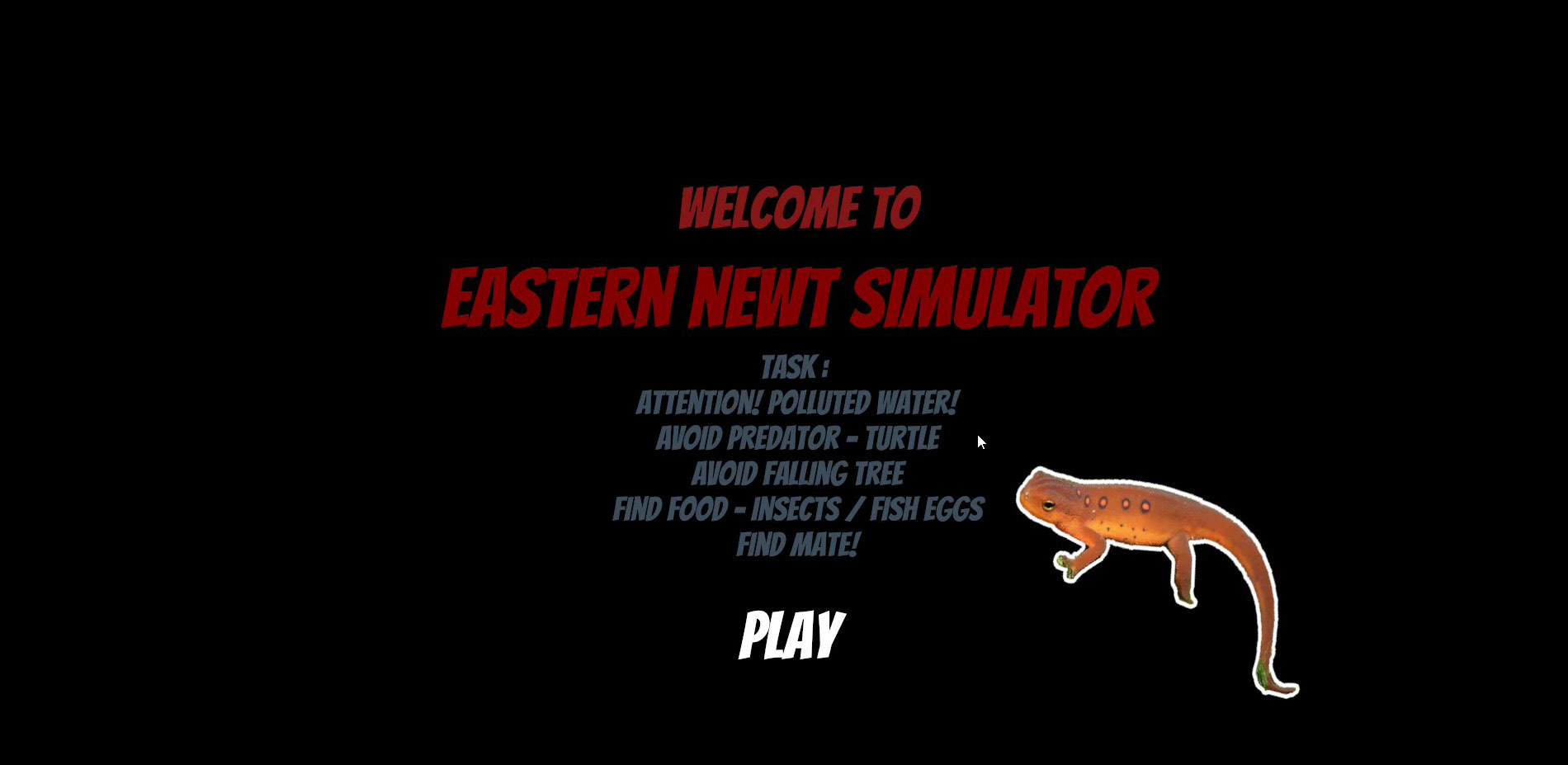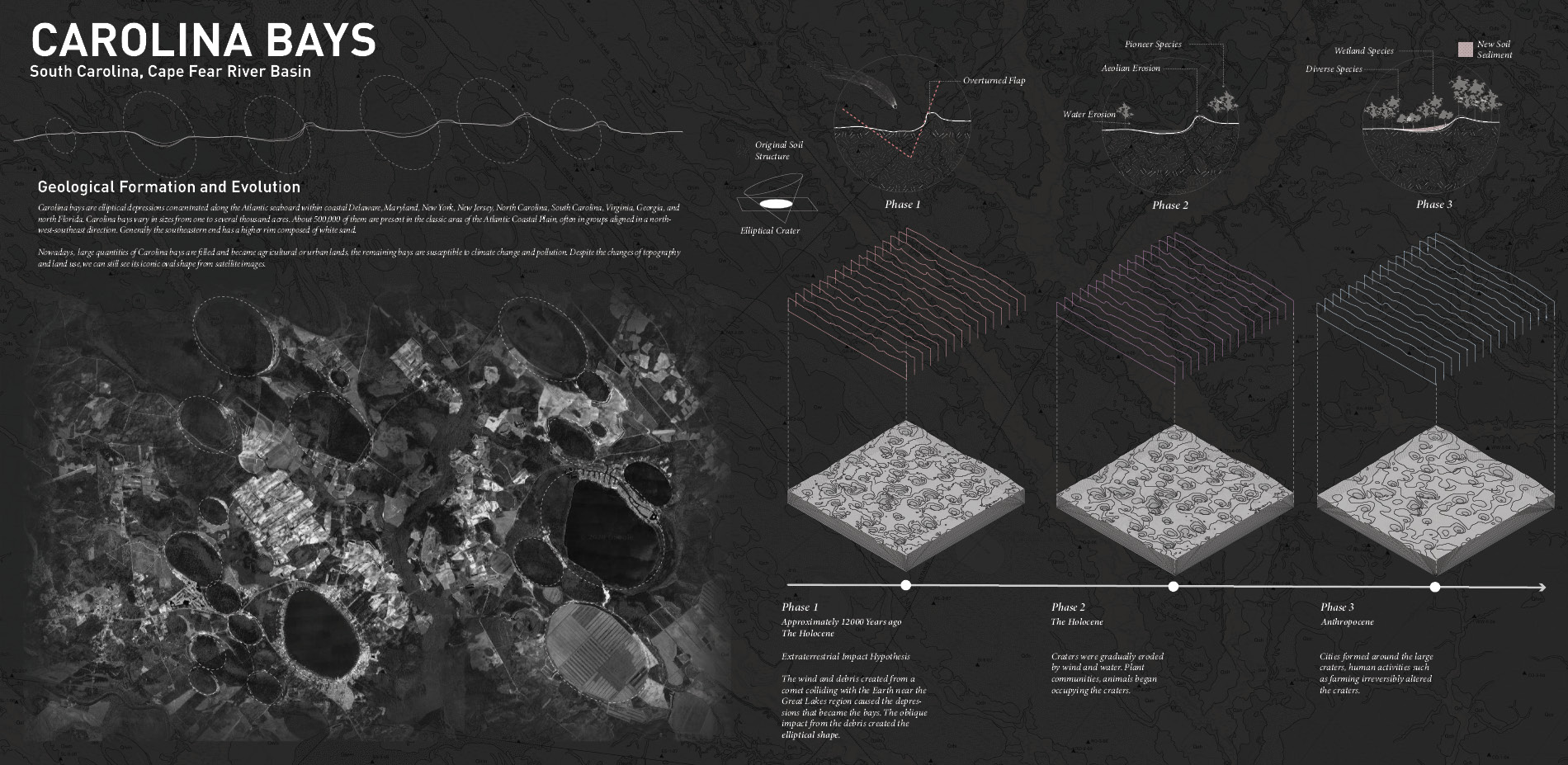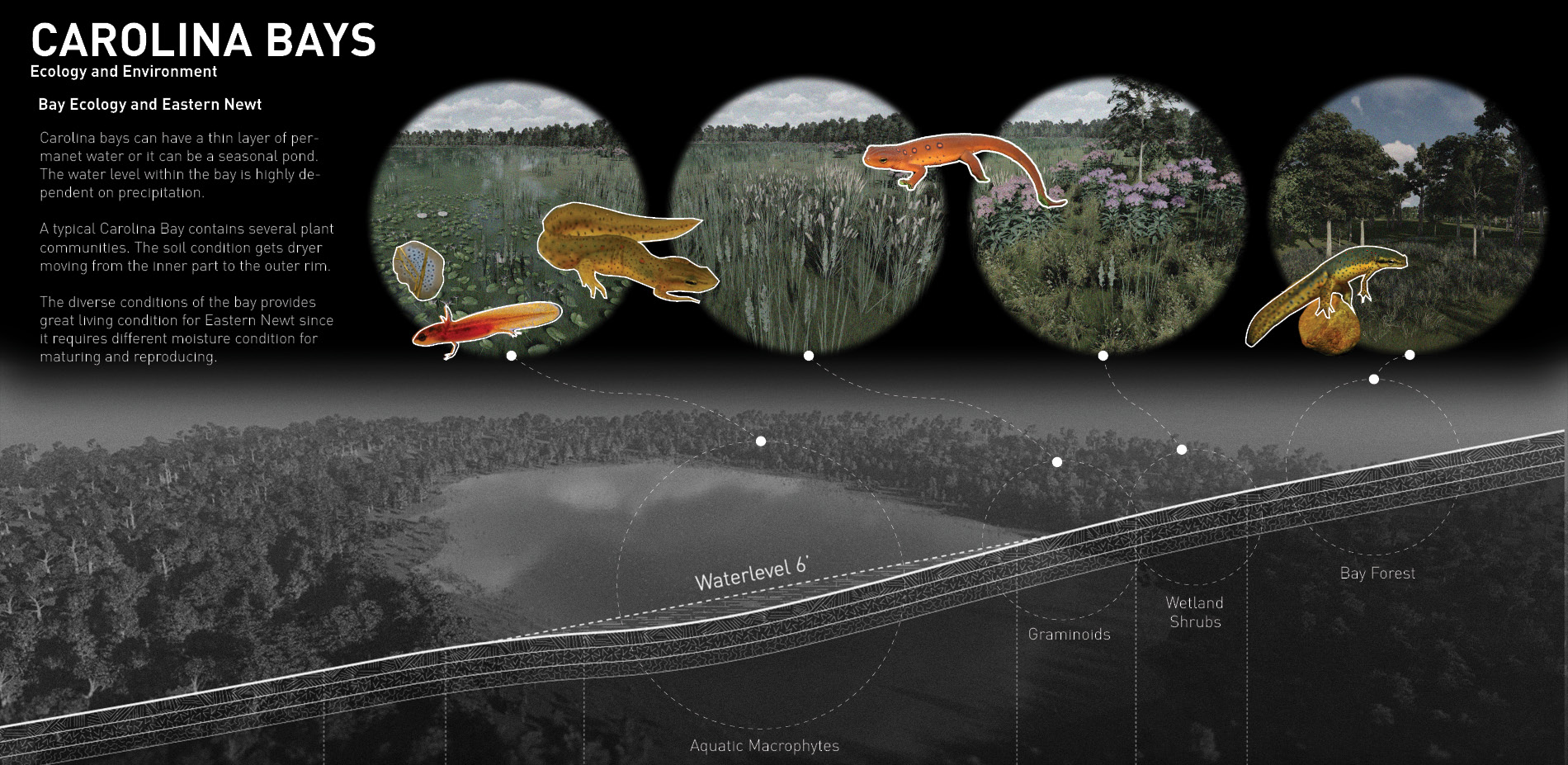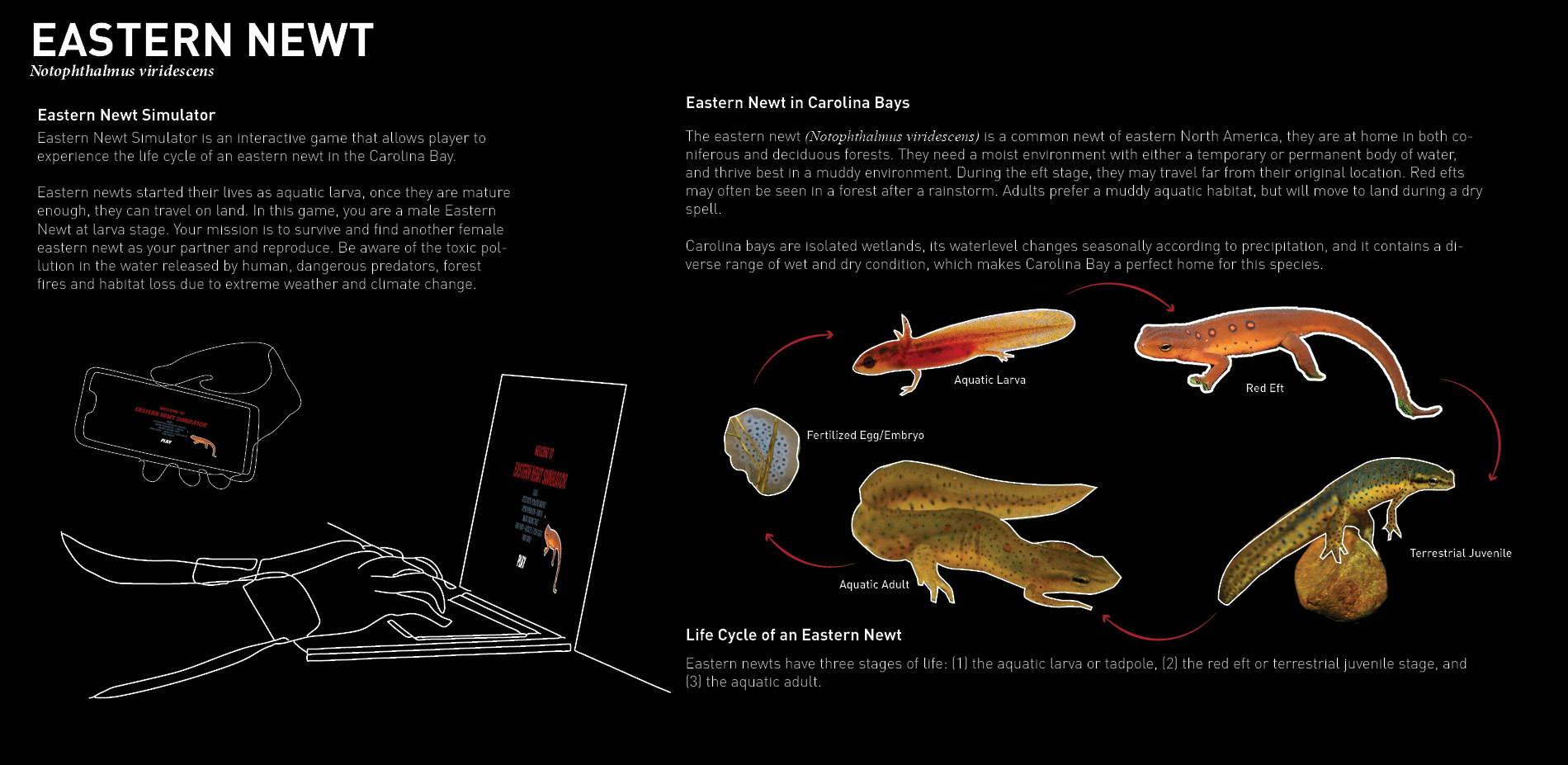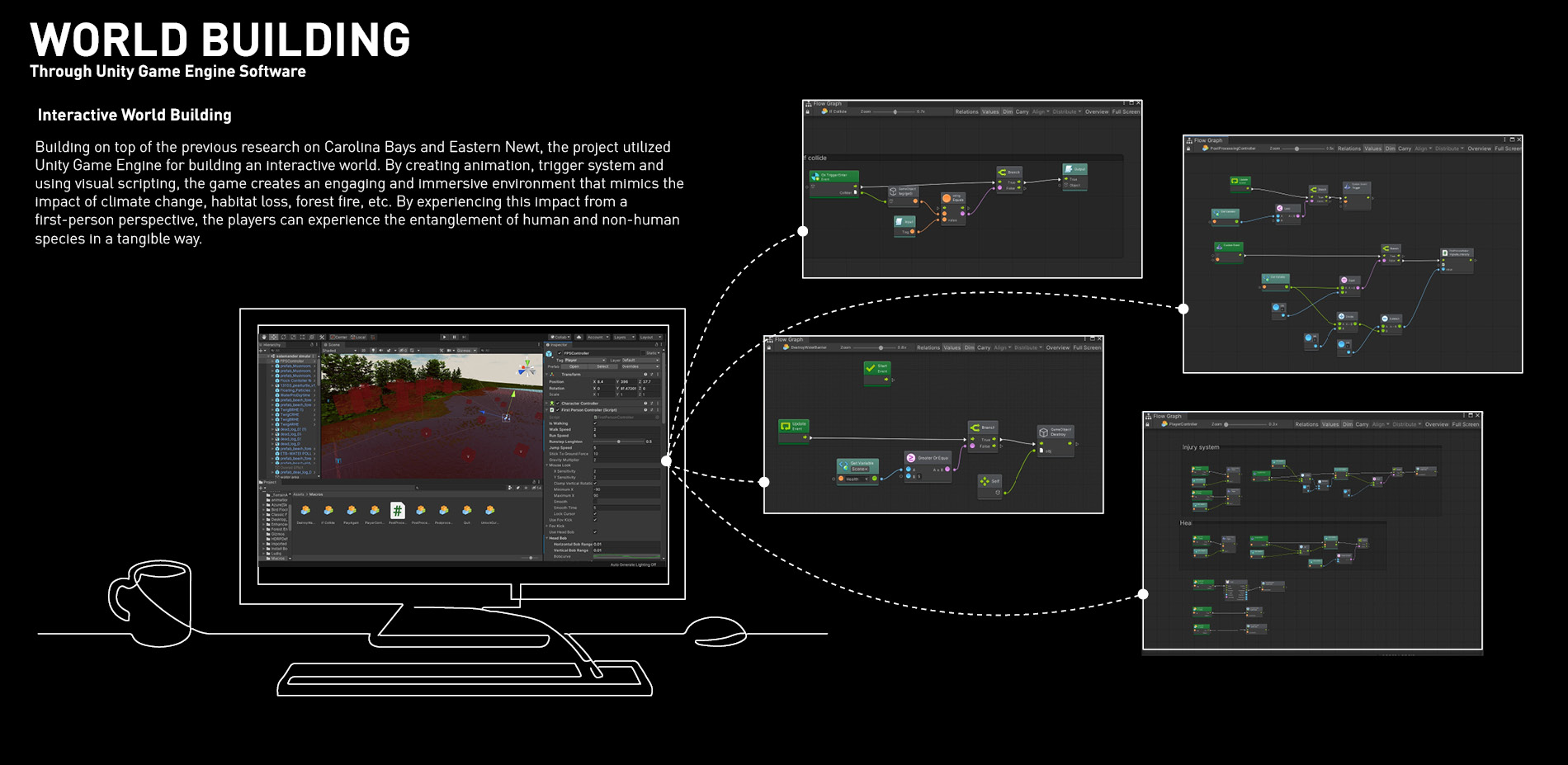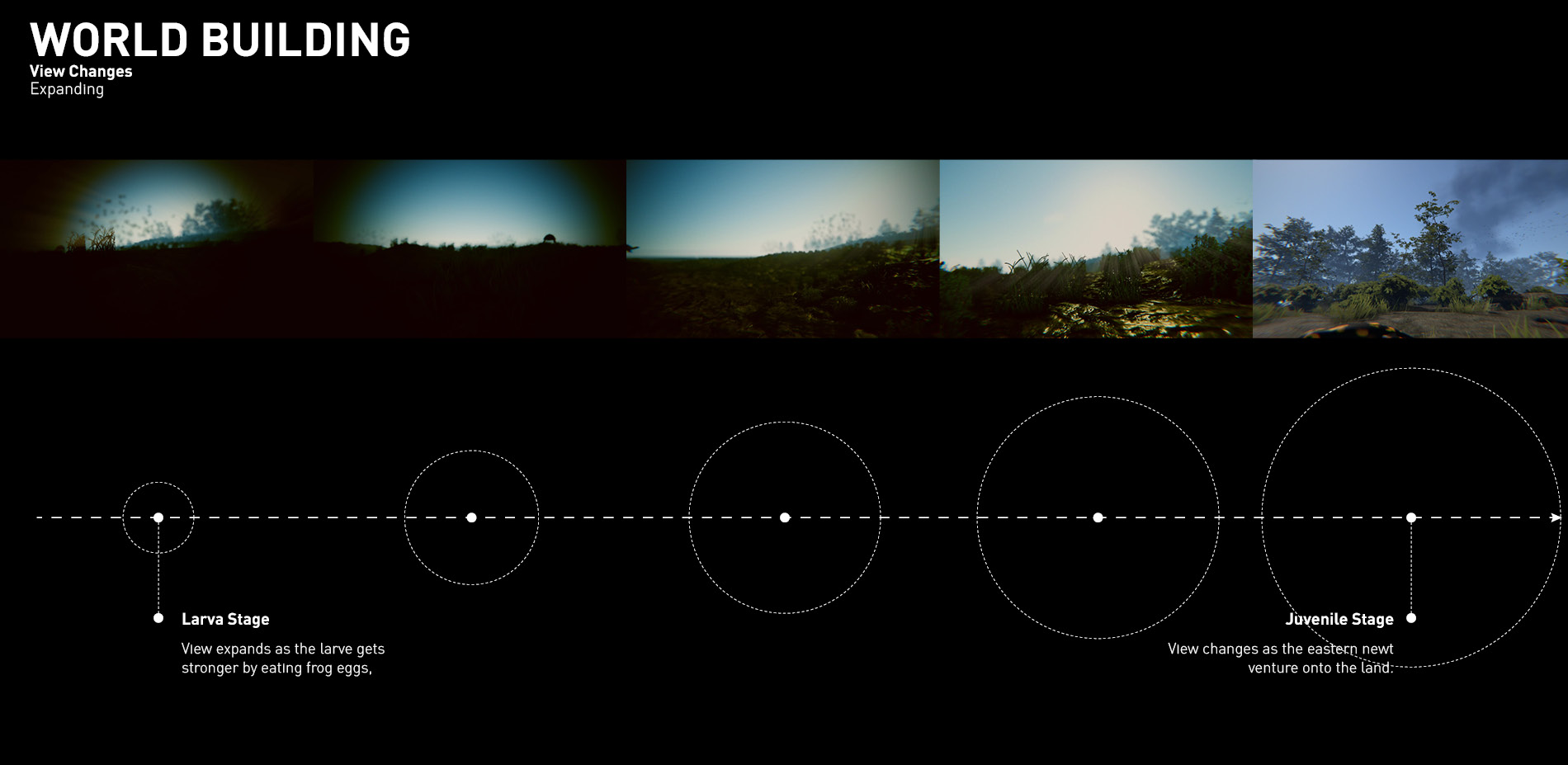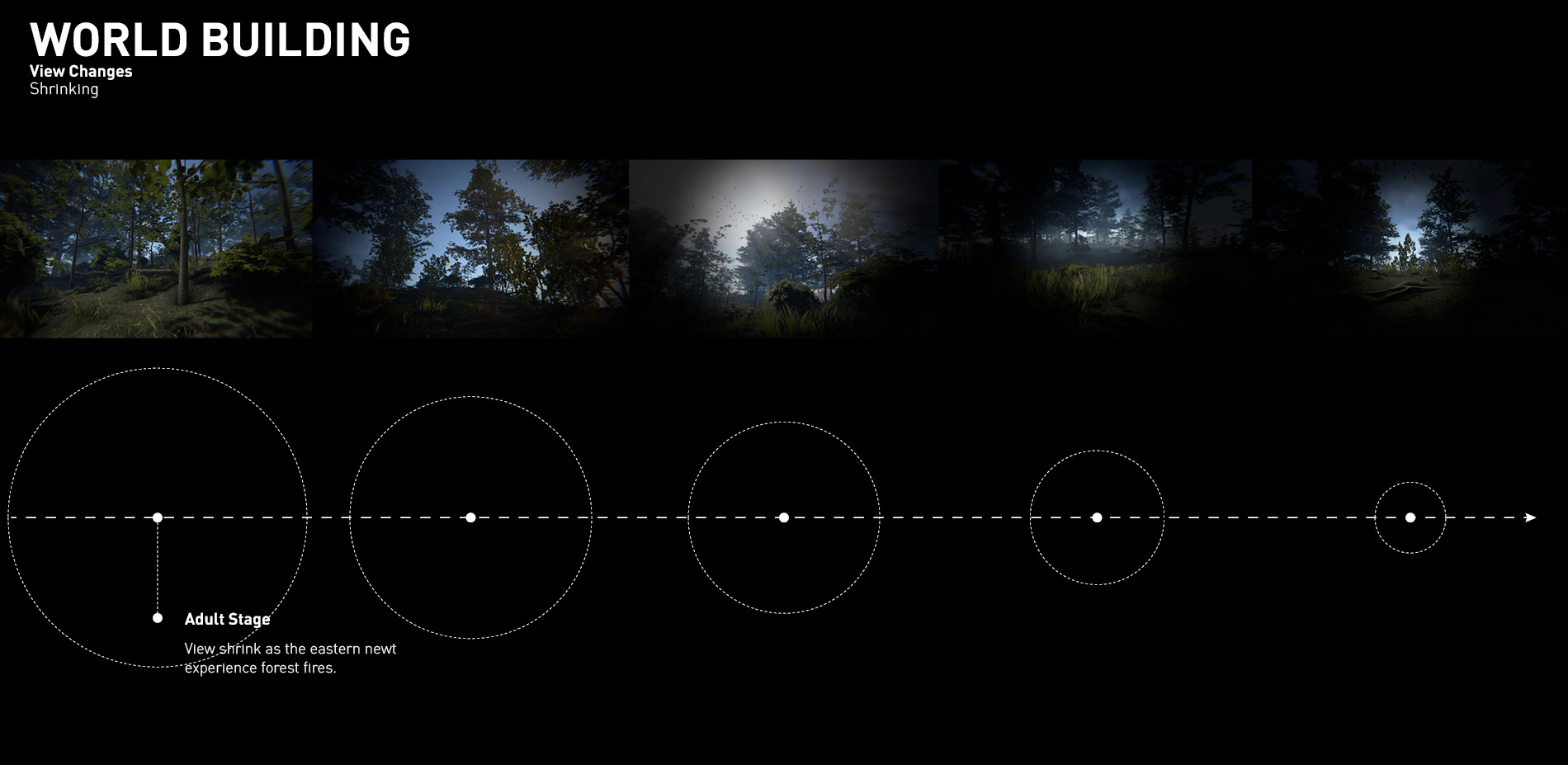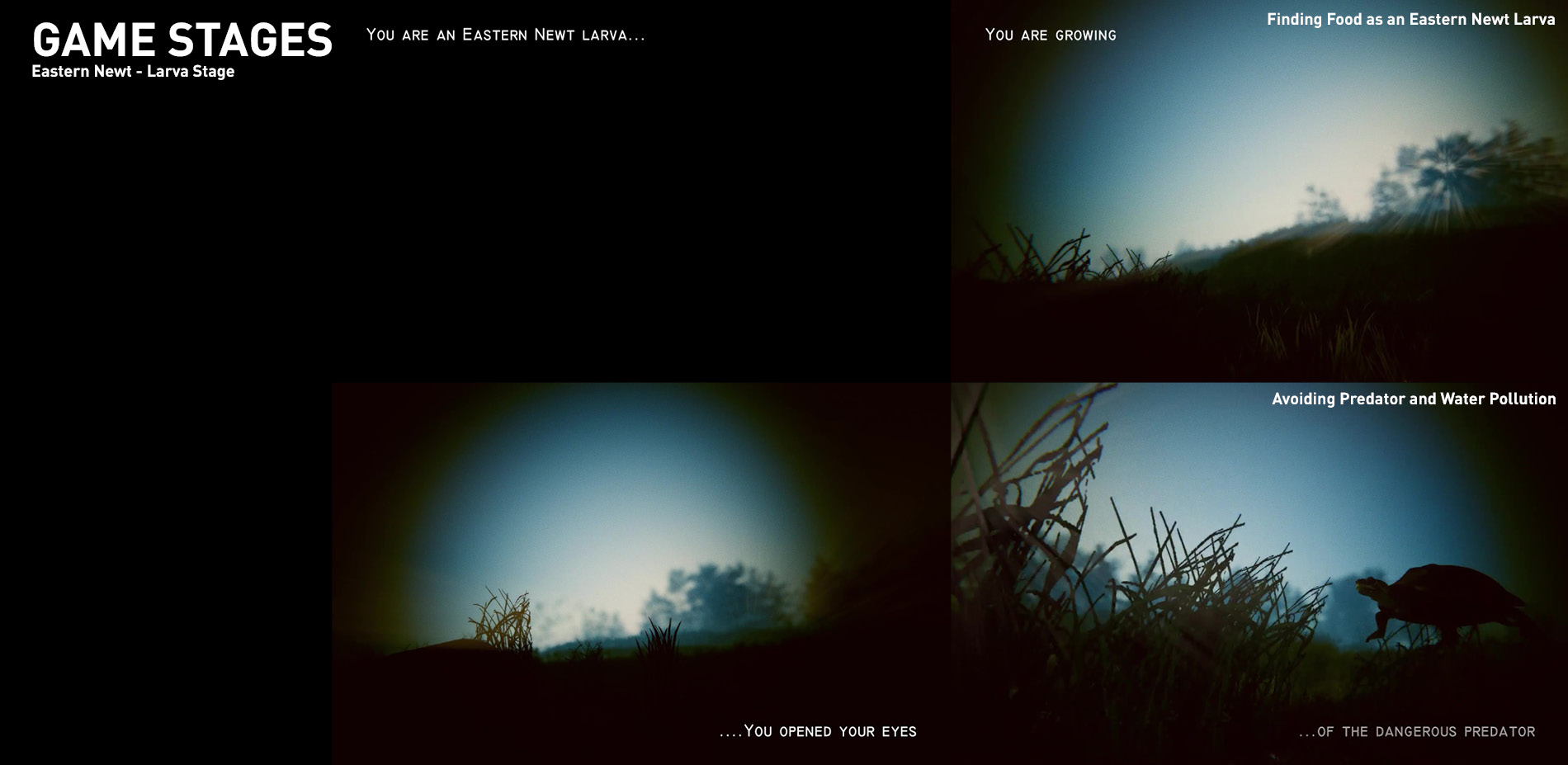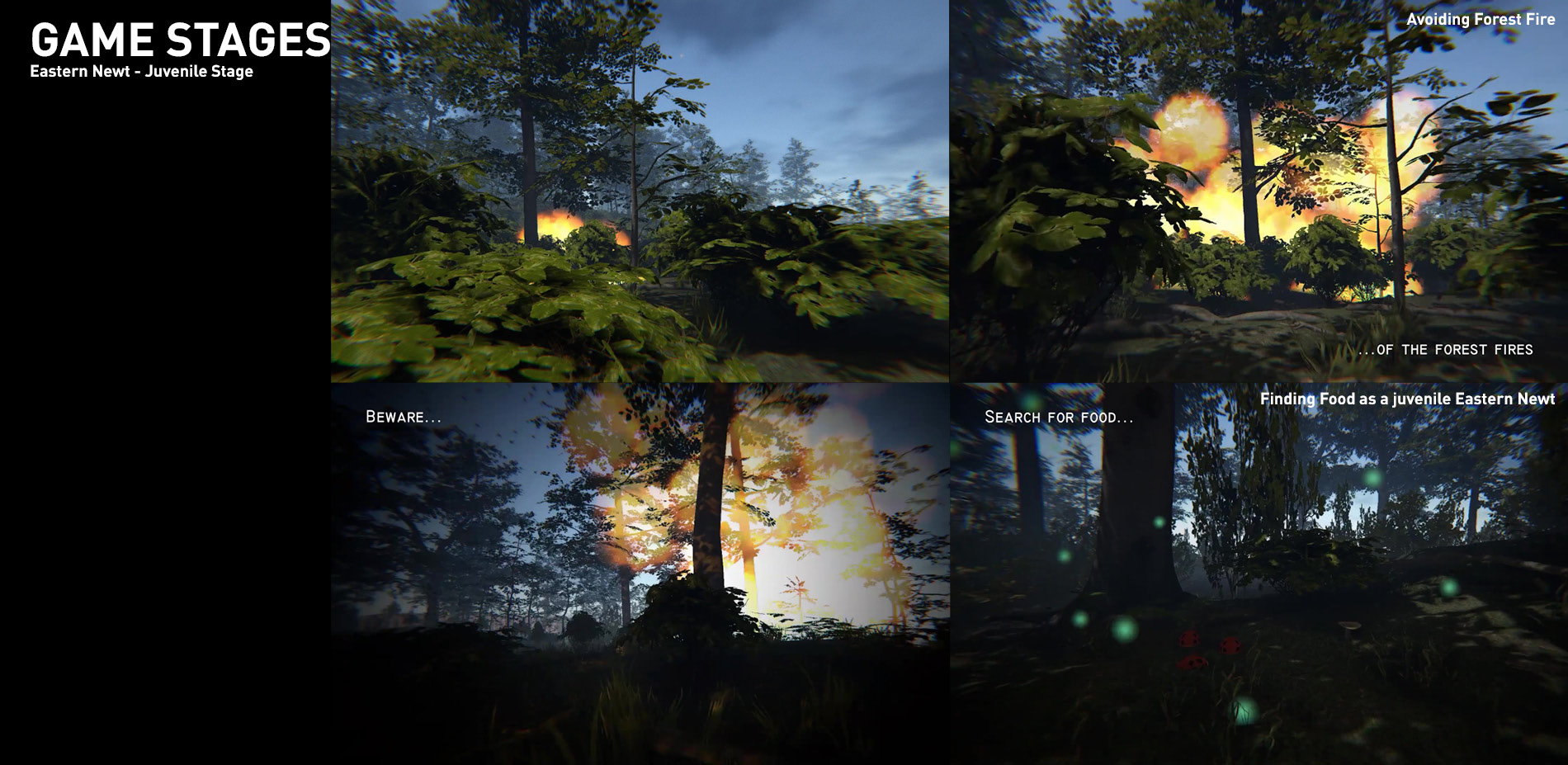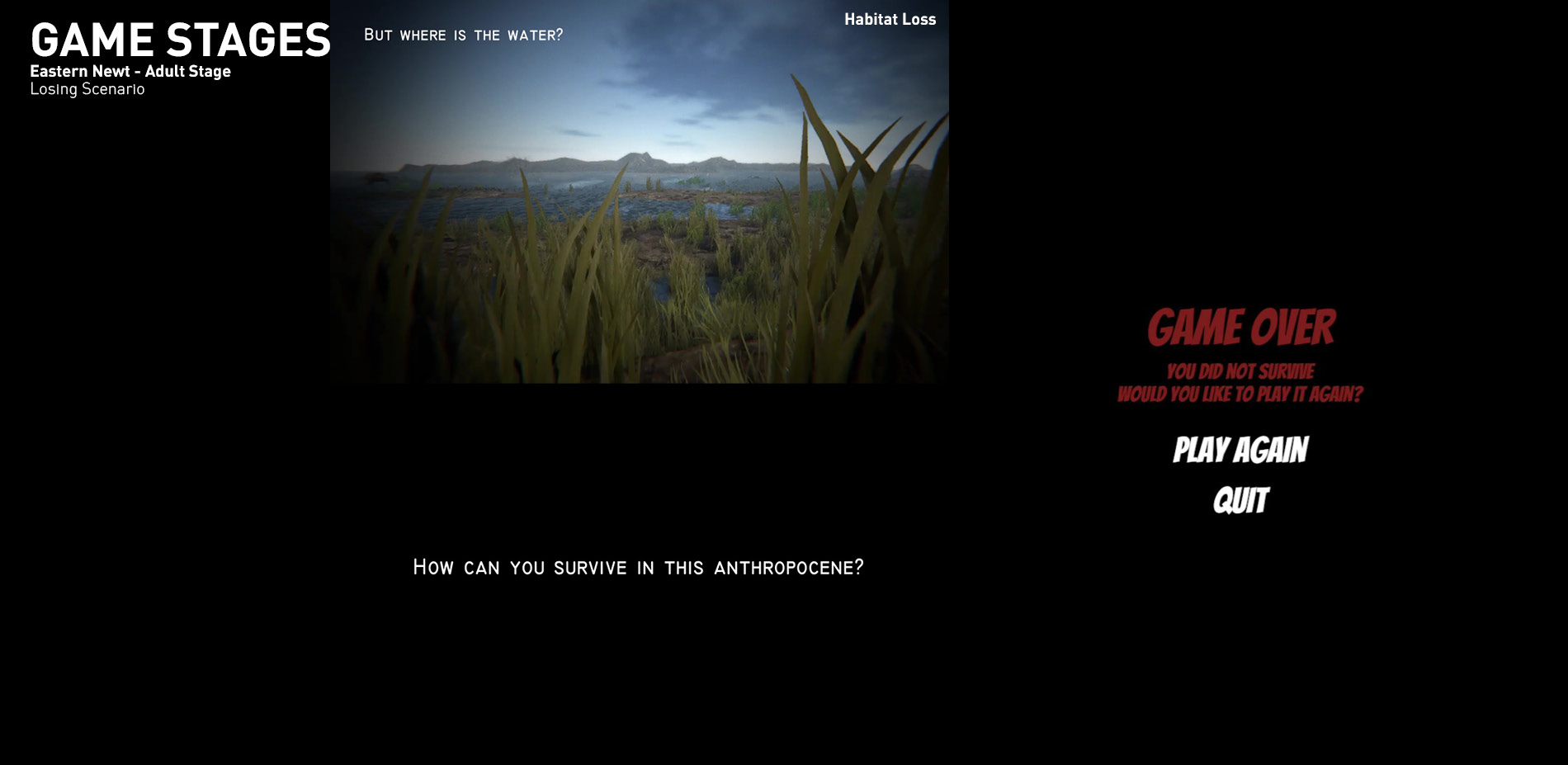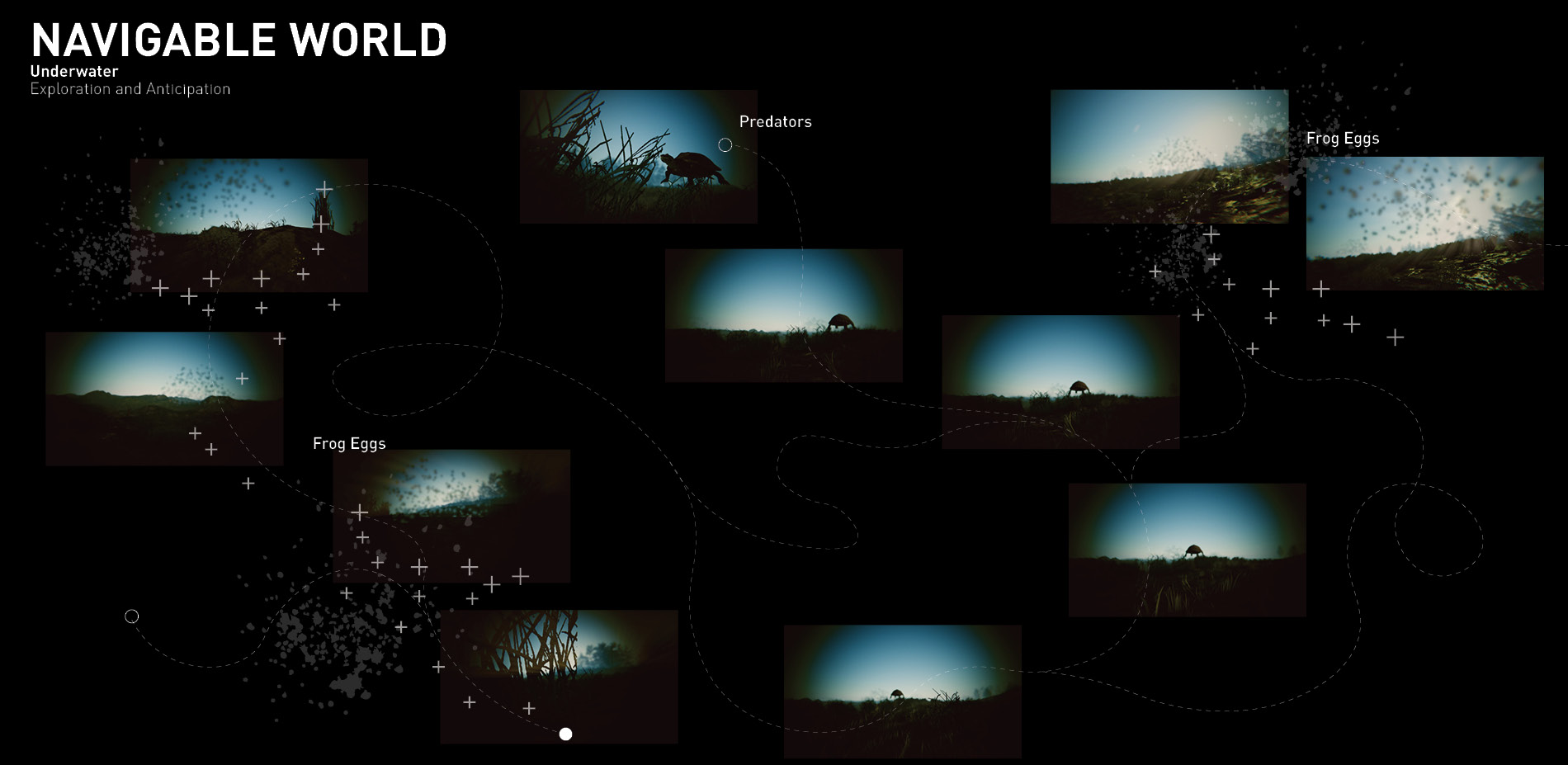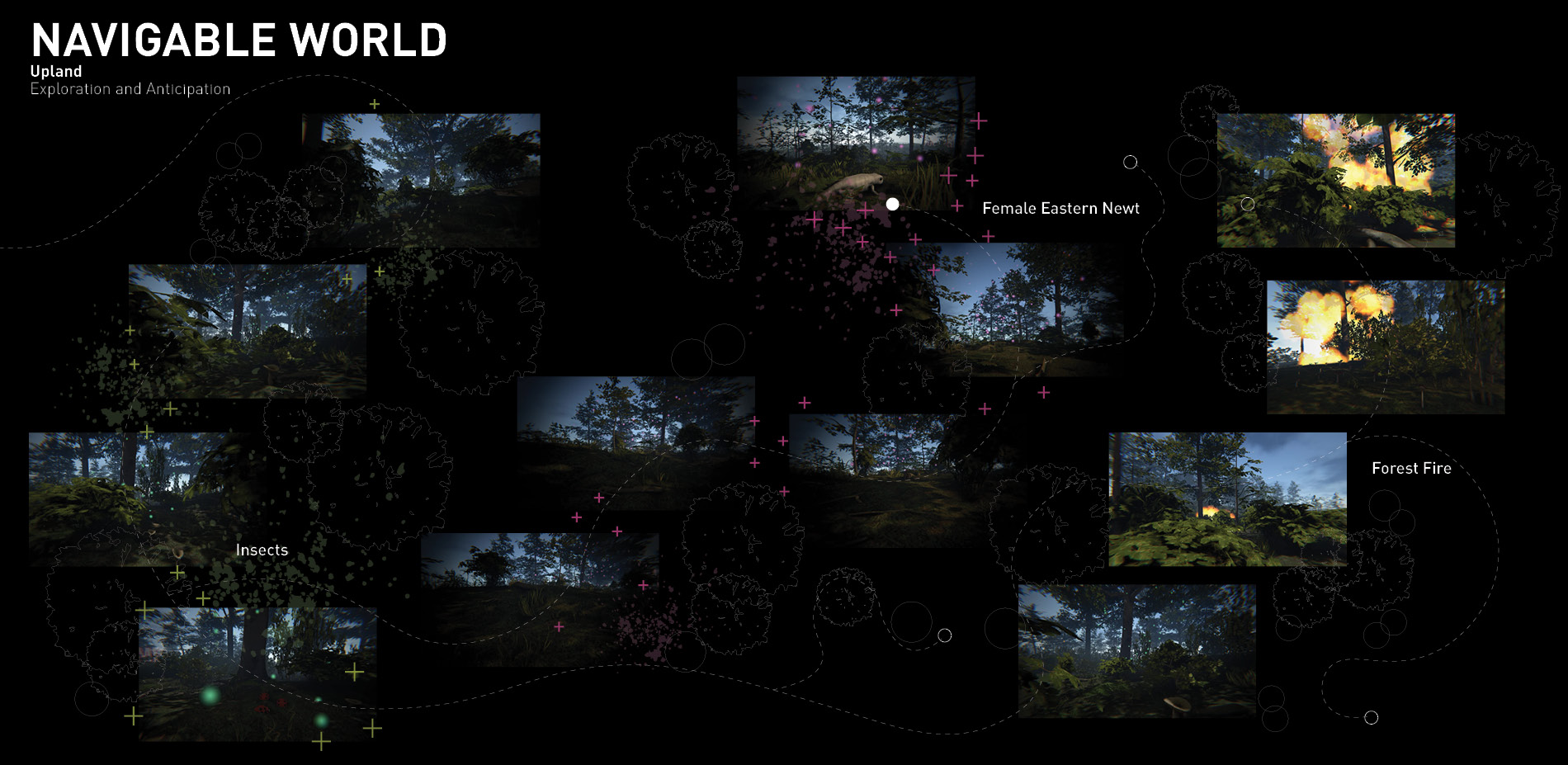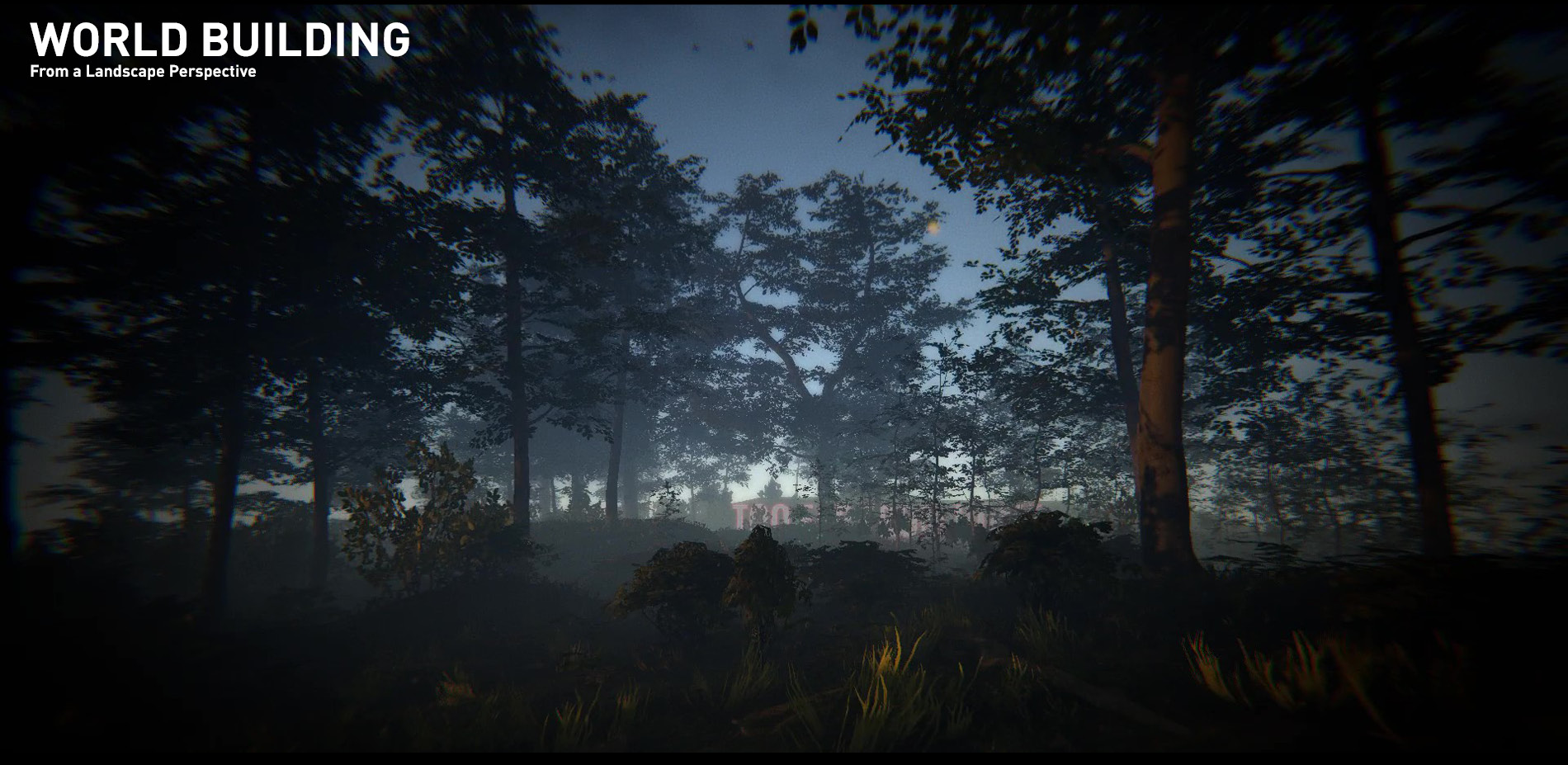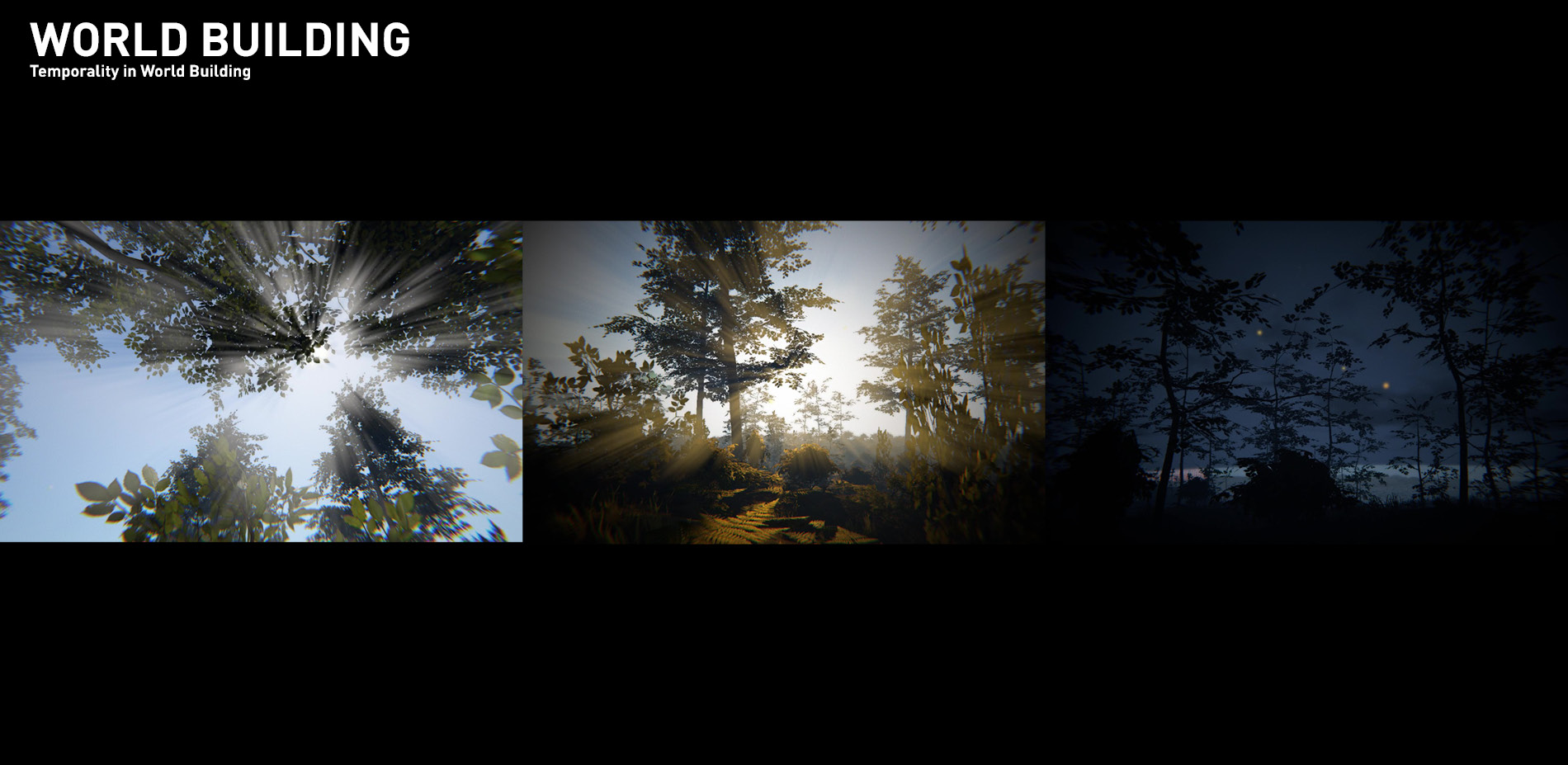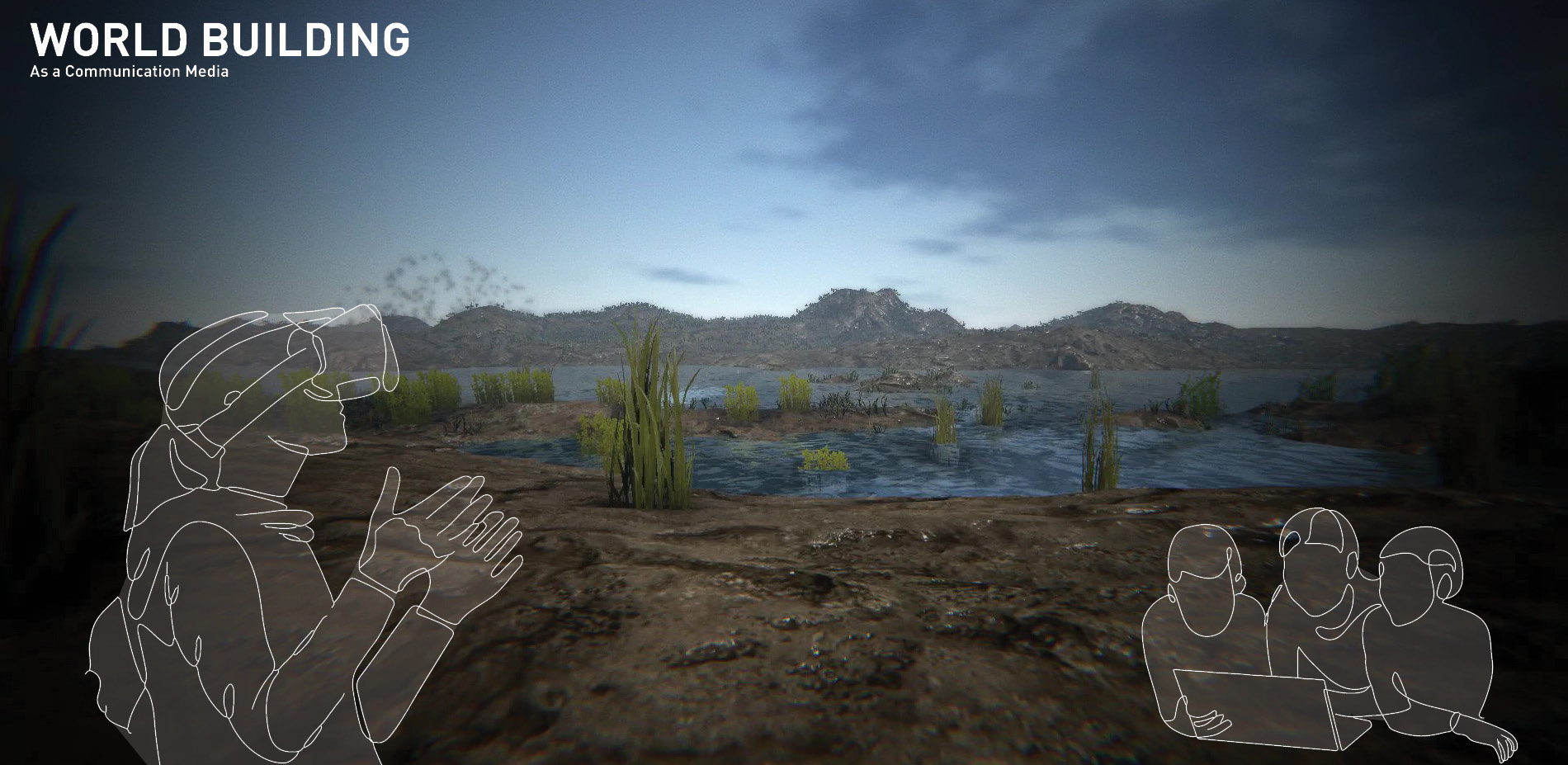Amphibia: Navigating the Anthropocene as an Eastern Newt Through Interactive Gaming
Honor Award
Communications
Fanke Su, Student ASLA
Faculty Advisors: Matthew Seibert
University of Virginia
This video game project that simulates a newt’s life in the wild is referencing quite a few video games; they have done the precedent research to know what is fun. They must have put so much work into creating that first-person experience—it works toward conserving and preserving landscape awareness and made us think about how we get people outside of landscape architecture to engage with the profession.
- 2021 Awards Jury
Project Statement
As an immersive and interactive video game, Eastern Newt Simulator focuses on the ecological dynamics of a particular sensitive indicator species in the Carolina Bays. Building on previous studies, the dynamic simulation raises awareness of climate change and its impact to fragile ecosystems. Utilizing the Unity game engine software, the project allows players to be a eastern newt larva and embark on an adventure to survive, grow and eventually find a mate to reproduce.
Through the highly affective and distributive format of a first-person game, the project leverages landscape architecture's multi-disciplinarity, skills in data synthesis, and visual storytelling to reach new audiences, thus creating a compelling journey into the impacts of climate related ramifications on the bays' ecology.
The game strives to visualize a specific and intimate view of the Anthropocene through multi-species empathetic displacement, effectively rendering an accessible method of climate change education and pointing to new ways forward. Ultimately, it calls for the adoption of new media formats, visualization methods, and tools of storytelling to affect change in a time of climate crisis.
Project Narrative
World building through game engine software can be a powerful tool for landscape architects to visualize the impact of climate change to a wider audience. Unlike drawings or static 3D models, video games are particularly engaging, interactive, and exploratory. Through carefully choreographed worlding building, landscape architects can digitally transform their conceived space to a perceived space, and to convey their messages by encouraging players to discover and experience for themselves. In addition to the interactive nature of video games, it is also a well-established format of entertainment. Landscape architects can take advantages of this media and deploy our interdisciplinary skills of conceiving a space, choreographing a sequence of movements, synthesizing scientific data and studies and so on through gaming and world building. Furthermore, the media of gaming allows the audience to travel between physical locations and scales, to travel between temporal scales, and to experience inter-corporeality by place oneself in different bodies.
The project Eastern Newt Simulator set out to display the impact of climate change in a non-linear way by creating a first-person perspective of an eastern newt larva and encourages players to ponder what it means to be non-human, living in a world where human influence is ubiquitous.
The project started as an inquiry of a seemingly bizarre geological feature, the Carolina Bays. From satellite imagery, the bays are tilted in the same angle, scattered on the southern coast of the United States. The bays vary in water level, some are permanent open water, others are seasonal ponds that depend on precipitation. The bays also vary in sizes and depth but are distinctive with their elliptical shape. The wide range of vegetation structures, moisture and soil condition make the Carolina Bays one of the places with the most biodiversity along the coastline, including some of the rare and endangered species.
Further studies on the evolution of Carolina bays revealed the impact of human activities on this unique landscape. Over the years, more and more bays are drained and filled by human for housing developments, farming, golf courses, highway building, etc. The drainage and modification on the bays irreversibly changed its vegetation structure, causing further habitat loss for animal species that depend upon this condition. Furthermore, Carolina Bays are isolated wetlands, which makes them extremely susceptible to climate change since the water source is heavily relied on precipitation.
Upon researching the amphibians living in the bays, the project focuses on one particularly sensitive indicator species salamander species, the eastern newt, whose population has been slowly declining over the years.
Eastern newts start their lives as aquatic larva. In their early stage of growth as larvae and aquatic adults, they live in small areas of fresh water, including lakes, marshes, and ponds. Once they are mature enough, they can travel on land as terrestrial juveniles, and live among leaf litter. However, they require water to breed, and more volatile climate with unpredictable precipitation might be dangerous for eastern newts. Research shows that the eastern newts may be suffering at higher-than-normal rates from diseases caused by viruses, bacteria, and fungi, due to a variety of environmental problems including pollution, acid precipitation and deforestation.
Building on top of the previous research of eastern newts and Carolina Bays, the game was developed as a “walking simulator”, a genre of game encouraging exploration and experience over the more common video game goals of destruction and winning. The simulator uses the Unity game engine software to create a dynamic and realistic environment. By using visual scripting tools combined with trigger systems, the simulator creates a navigable world with interactive components, waiting to be discovered by players. Unlike viewing a static image or reading an article, the game encourages you to walk around, and experience for yourself.
In this game, you are a male eastern newt at larva stage. Your mission is to survive and find another female eastern newt as your partner and go back to the water to reproduce. Survival is not an easy task in a bay with human activities and natural predators. Staying in the water for too long might be dangerous, for it is polluted by toxic chemicals that are discharged by human industries. Forest fires might occur due to extreme weather conditions, or it might be a prescribed burn by humans for maintenance purposes. You might lose your habitat due to urban development, or it could be inhabitable simply because of the lack of precipitation.
These events are embedded in the interactive components of the simulator. Wandering in this world, you might find that your view gets blurry when you are in danger, or it might get brighter because you have gained strength by hunting. The visual cues in conjunction with sound effects create a compelling navigable world for exploration.
Despite the horror of the negative impacts presented in the game, a navigable world like the Eastern Newt Simulator also allows the players to just relax and see the beauty of the landscape amidst the crisis. It allows education as well as reflection upon our roles as human in response to the impending danger of climate change.
Eastern Newt simulator is a form of empathetic displacement through first person perspective.
The integration of research and virtual world building through game making gives landscape architects a more communicable tool to express our ideas and concerns to a wider audience. It also gives the audience more agency in participating in learning and exploring the relationships and entanglements compared to a complex diagram or a piece of scientific paper. The instant visual and auditory feedback, the exploratory nature of a video game provides an alternative way of communicating ideas to non-designers.
